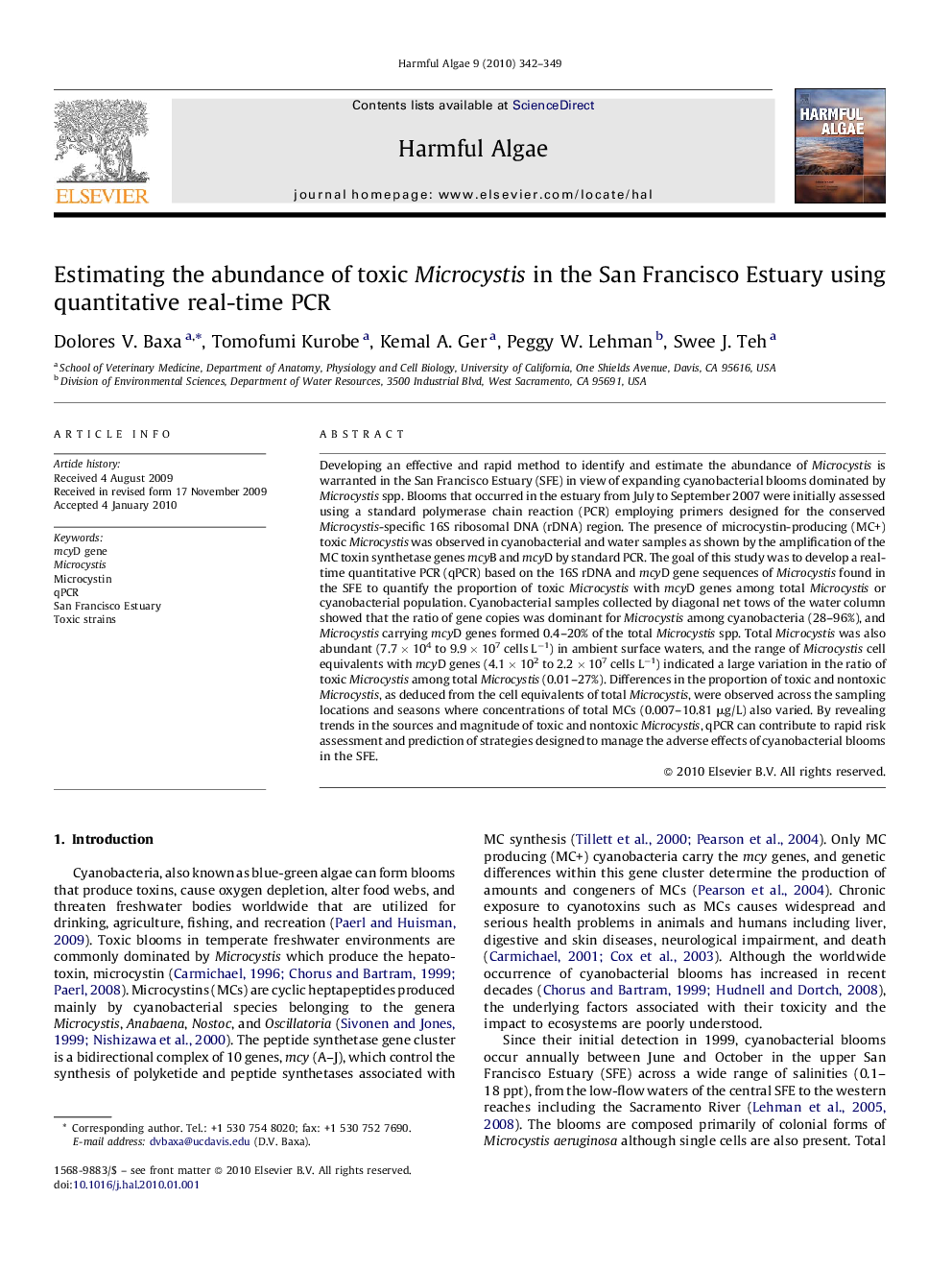| کد مقاله | کد نشریه | سال انتشار | مقاله انگلیسی | نسخه تمام متن |
|---|---|---|---|---|
| 4545795 | 1327471 | 2010 | 8 صفحه PDF | دانلود رایگان |

Developing an effective and rapid method to identify and estimate the abundance of Microcystis is warranted in the San Francisco Estuary (SFE) in view of expanding cyanobacterial blooms dominated by Microcystis spp. Blooms that occurred in the estuary from July to September 2007 were initially assessed using a standard polymerase chain reaction (PCR) employing primers designed for the conserved Microcystis-specific 16S ribosomal DNA (rDNA) region. The presence of microcystin-producing (MC+) toxic Microcystis was observed in cyanobacterial and water samples as shown by the amplification of the MC toxin synthetase genes mcyB and mcyD by standard PCR. The goal of this study was to develop a real-time quantitative PCR (qPCR) based on the 16S rDNA and mcyD gene sequences of Microcystis found in the SFE to quantify the proportion of toxic Microcystis with mcyD genes among total Microcystis or cyanobacterial population. Cyanobacterial samples collected by diagonal net tows of the water column showed that the ratio of gene copies was dominant for Microcystis among cyanobacteria (28–96%), and Microcystis carrying mcyD genes formed 0.4–20% of the total Microcystis spp. Total Microcystis was also abundant (7.7 × 104 to 9.9 × 107 cells L−1) in ambient surface waters, and the range of Microcystis cell equivalents with mcyD genes (4.1 × 102 to 2.2 × 107 cells L−1) indicated a large variation in the ratio of toxic Microcystis among total Microcystis (0.01–27%). Differences in the proportion of toxic and nontoxic Microcystis, as deduced from the cell equivalents of total Microcystis, were observed across the sampling locations and seasons where concentrations of total MCs (0.007–10.81 μg/L) also varied. By revealing trends in the sources and magnitude of toxic and nontoxic Microcystis, qPCR can contribute to rapid risk assessment and prediction of strategies designed to manage the adverse effects of cyanobacterial blooms in the SFE.
Journal: Harmful Algae - Volume 9, Issue 3, March 2010, Pages 342–349